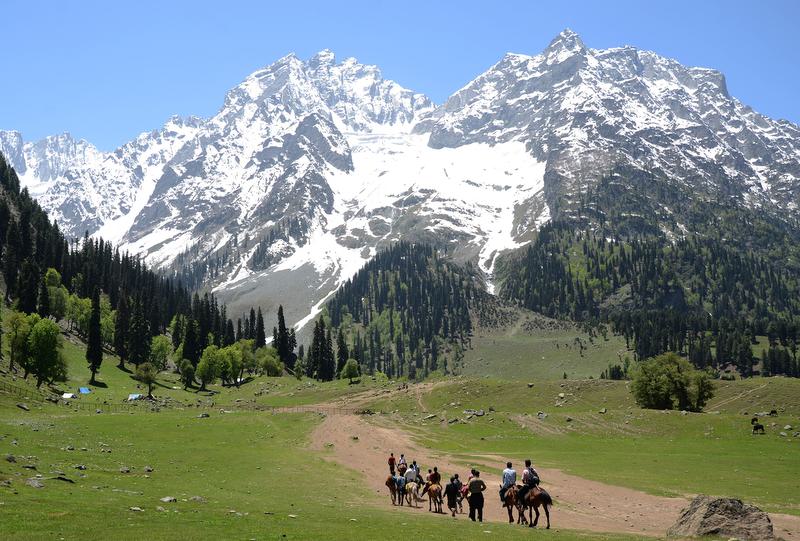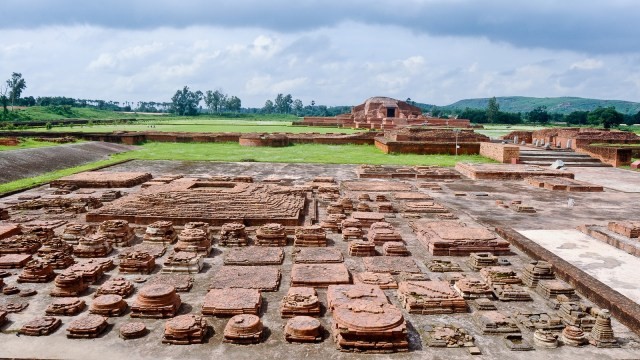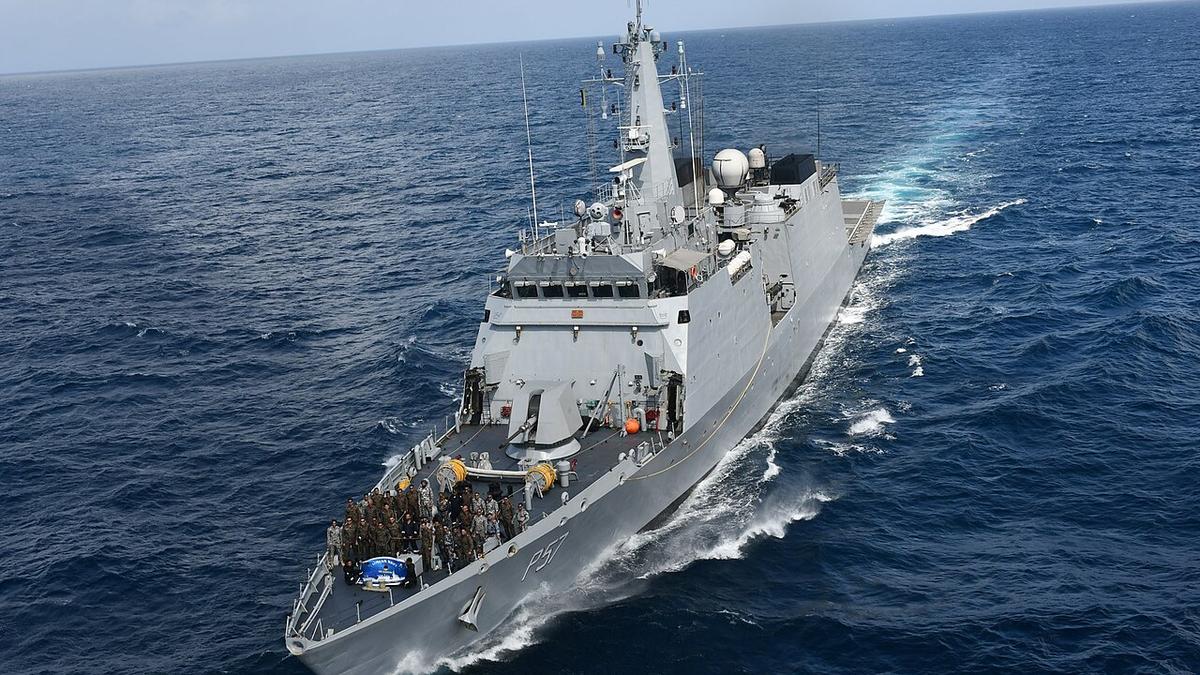Abolition of Equalisation Levy on Online Advertisements
- 26 Mar 2025
In News:
The Indian government has proposed to abolish the Equalisation Levy (digital tax) on online advertisements, effective April 1, 2025. This move is set to benefit digital advertisers on platforms like Google, Meta (formerly Facebook), and X (formerly Twitter), reducing their tax burden.
Overview of Equalisation Levy
- Introduction:
- The Equalisation Levy was introduced by the Finance Act of 2016. Its primary objective was to tax foreign digital service providers (such as Google, Meta, etc.) for income generated from digital transactions in India, ensuring these businesses contribute fairly to India’s tax system, despite having no physical presence.
- Coverage:
- Initially, the levy applied to online advertising services, imposing a 6% tax on payments made to non-resident providers. This was later expanded in 2020 to include e-commerce transactions, imposing a 2% levy on revenues from e-commerce operations. The e-commerce levy was abolished in August 2024.
- Conditions: The levy is applicable if:
- The payment is made to a non-resident service provider.
- The annual payment to the service provider exceeds Rs. 1 lakh in a financial year.
- Exclusions:
- If the non-resident service provider has a permanent office in India or if the income qualifies as royalties or technical services fees, it is not subject to the levy.
- Transactions under Rs. 1 lakh or involving exempt income under Section 10(50) are not taxed under the Equalisation Levy.
Key Reasons for Abolishing the Equalisation Levy
- Improved Tax Relations with the US: The levy has been a point of contention, particularly with the US, which threatened retaliatory tariffs. The move to abolish the 6% levy is seen as a step to improve trade relations and avoid escalation of trade disputes.
- Simplification of Tax Laws: Experts believe that removing the levy aligns with India’s broader efforts to simplify and streamline its tax legislation, making it easier for digital service providers to operate within the country.
- Addressing Global Concerns: The proposal to remove the levy is also in response to concerns raised by partner nations, like the US, about the unilateral nature of the tax. This step aims to reduce friction and maintain smoother diplomatic and trade ties.
Implications of the Abolition of the Equalisation Levy
- Reduced Costs for Advertisers: The removal of the 6% tax will lower the financial burden on advertisers in India who use platforms like Google, Meta, and X. This is expected to encourage more investment in digital advertising and benefit the broader digital economy.
- Enhanced Competitiveness: By removing the levy, India aims to create a more level playing field for both domestic and foreign companies involved in digital advertising, fostering fairer competition.
- Impact on International Relations: The decision could help defuse trade tensions, particularly with the US, and might avoid reciprocal tariffs that could affect Indian companies operating internationally.
- Tax Revenue Implications: While the abolition may result in short-term revenue loss from the digital services sector, it is anticipated that the long-term benefits from increased digital advertising spending and improved international relations will outweigh the initial loss.
Future Outlook
- Monitoring and Adjustments: While the government has moved to abolish the Equalisation Levy, experts suggest that further monitoring and analysis of digital taxation might be required, especially considering global trends and the evolving digital economy. The impact of this abolition on India’s digital tax landscape will need to be observed closely.
- Diplomatic Measures: Along with the abolition of the levy, the government continues to pursue diplomatic efforts to ensure fair trade practices and avoid potential retaliatory measures by foreign nations.
Permafrost Degradation in the Kashmir Himalayas

- 26 Mar 2025
In News:
Permafrost, the ground that remains frozen for at least two years, has long been a critical feature in high-altitude regions like the Kashmir Himalayas. Recent studies have highlighted that melting permafrost is emerging as a significant environmental threat, with the potential to disrupt both ecological systems and infrastructure in the region.
Key Findings of Recent Studies
- Extent of Permafrost: Permafrost covers 64.8% of Jammu & Kashmir (J&K) and Ladakh, with 26.7% being continuous, 23.8% discontinuous, and 14.3% sporadic.
- Regional Distribution: Ladakh has the highest concentration of permafrost (87%), while areas like the Shigar Valley and Siwaliks have no permafrost.
- Impact on Infrastructure: Permafrost degradation threatens key infrastructure, including roads, settlements, and hydropower projects. Approximately 193 km of roads, 2,415 households, and eight hydropower projects are at risk due to thawing permafrost.
- Glacial Lake Outburst Floods (GLOFs): Permafrost thaw increases the likelihood of GLOFs, as seen in recent events like the 2021 Chamoli disaster and the 2023 South Lhonak GLOF. These floods, triggered by the instability of glacial lakes formed by melting ice, can cause significant destruction.
Environmental Impacts of Permafrost Thawing
- Carbon Release: As permafrost melts, it releases stored organic carbon, including methane, a potent greenhouse gas that exacerbates climate change.
- Hydrological Changes: Thawing permafrost can alter river flow and groundwater availability, impacting water resources for local communities and ecosystems.
- Geological Instability: The breakdown of permafrost leads to landslides and slope instability, posing risks to both natural landscapes and human settlements.
Factors Contributing to Permafrost Degradation
- Global Warming: Rising surface temperatures are the primary driver of permafrost thaw.
- Human Activities: Construction activities, including road-building, dam construction, and real estate development, disturb the stability of permafrost. Additionally, deforestation and land-use changes increase the exposure of permafrost to solar radiation, accelerating its degradation.
- Natural Events: Earthquakes and natural processes, like rock-ice avalanches, also contribute to the destabilization of permafrost.
Risks to Local Communities and Infrastructure
- Vulnerable Regions: Thousands of households and critical infrastructure in permafrost-rich areas, such as Ladakh, are at risk due to permafrost thawing. Military and strategic infrastructure, including roads vital for connectivity, may face serious disruptions, compromising national security.
- Glacial Lake Outburst Floods (GLOFs): The melting of glaciers can lead to the formation of proglacial lakes, increasing the risk of GLOFs. In J&K, 332 such lakes have been identified, with 65 showing significant flood risks. GLOFs are a major threat to downstream communities and infrastructure.
Way Forward: Mitigating Risks
- Integrated Planning: Future infrastructure development, especially roads and hydropower projects, should incorporate data on permafrost zones. Risk-sensitive land-use planning and construction methods must be adopted to minimize environmental damage.
- Enhanced Monitoring: Remote sensing technologies, including satellite-based monitoring and ground-based LiDAR systems, should be employed to track permafrost degradation and associated environmental changes more effectively.
- Comprehensive Environmental Assessments: Environmental Impact Assessments (EIAs) must be strengthened to include the risks of permafrost thawing, particularly in relation to GLOFs, landslides, and groundwater depletion. This is crucial for ensuring that development projects in these regions do not exacerbate the environmental risks posed by permafrost degradation.
Targeted Species Conservation
- 26 Mar 2025
In News:
A major global study published in PLOS Biology (March 2025) has reaffirmed that targeted species-specific conservation measures are critical in reversing biodiversity loss and preventing extinctions. Despite the ongoing biodiversity crisis, where six times more species are declining than improving, the study found that where conservation efforts were applied, results were overwhelmingly positive.
Analyzing over 67,000 animal species from the IUCN Red List, researchers from institutions including the University of Cambridge, IUCN, and BirdLife International discovered that 99.3% of species that improved in threat status since 1980 had benefitted from conservation interventions, such as habitat protection, reintroduction, breeding programmes, and legal protections. Of the 969 species with globally increasing populations, 78.3% were under active conservation.
Notable global success stories include:
- Iberian Lynx: Rebounded from a few hundred to several thousand through breeding and habitat restoration.
- K?k?p? (New Zealand parrot): Revived via intensive monitoring and predator control.
- European Bison: Successfully reintroduced in Eastern Europe after extinction in the wild.
- Marine species such as humpback and blue whales also recovered after international moratoriums on whaling.
Island ecosystems like New Zealand, Mauritius, and the Seychelles showed the highest concentration of species recovery, while decline hotspots included the Tropical Andes, Sumatra, Malaysia, and Borneo.
Despite these successes, the study cautions that since 1980, 1,220 species of birds, mammals, and amphibians have deteriorated in Red List status compared to only 201 species that improved.
Causes include habitat loss, pollution, overexploitation, climate change, invasive species, and disease.The study called for landscape-scale conservation and ambitious implementation of Goal A of the Kunming-Montreal Global Biodiversity Framework to halt extinction risk and restore resilient populations.
India’s Species-Specific Conservation Efforts
India has adopted a multi-pronged species-specific conservation approach, primarily under the Integrated Development of Wildlife Habitats (IDWH), 2008, which continues under the 15th Finance Commission (2021–26). The scheme focuses on critically endangered species through captive breeding, habitat restoration, and community participation.
Key initiatives include:
- Species Recovery Programme: Prioritizes 22 species (16 terrestrial and 6 aquatic) for focused conservation.
- Project Tiger (1973) and Project Elephant (1992): Flagship conservation efforts for apex species.
- Project Crocodile: Initiated post-Wildlife (Protection) Act, 1972, supported by the UN. Saltwater crocodiles in Bhitarkanika increased from 95 (1975) to 1,811.
- Sea Turtle Conservation Project (1999): Focuses on Olive Ridley Turtles, listed as Vulnerable (IUCN), Schedule I (WLPA), and Appendix I (CITES).
- Vulture Action Plan 2020–25: Aims to eliminate diclofenac use and protect food sources for vultures. India's first Vulture Conservation and Breeding Centre (VCBC) was set up in Pinjore, Haryana.
- Indian Rhino Vision 2020: Increased the Greater One-Horned Rhinoceros population in Kaziranga National Park to over 2,600 (2022).
- Project Cheetah (2022): Reintroduces cheetahs extinct in India since 1952, with cheetahs from Namibia and South Africa released in Kuno National Park. India saw its first wild cheetah birth in 2023 after 75 years.
- Maharashtra’s Pangolin Action Plan: The first dedicated plan for pangolin conservation. Pangolins are listed under Schedule I of the WLPA, receiving the highest level of protection.
Revival of Vikramshila University

- 26 Mar 2025
In News:
Following the revival of Nalanda University, another historic centre of learning—Vikramshila University in Bihar—is now set for rejuvenation. The Archaeological Survey of India (ASI) began developing the site in December 2023 to boost heritage tourism. Simultaneously, the Bihar government has earmarked 202.14 acres of land in Antichak village, Bhagalpur district, for setting up a Central University at the ancient site.
The revival project was approved by the Central Government in 2015 with a sanctioned budget of ?500 crore. However, work was delayed due to issues in land acquisition. With recent approval of ?87.99 crore for land procurement and the identification of suitable land, the project has regained momentum. The site is located about 3 km from the ancient ruins of the original university.
Historical Background:
- Vikramshila University was founded in the late 8th or early 9th century AD by King Dharmapala of the Pala Dynasty as a response to declining academic standards at Nalanda.
- Situated along the banks of the Ganges in eastern India, Vikramshila emerged as a major hub of Tantric Buddhism (Vajrayana) and occult studies, distinguishing itself from the broader curriculum of Nalanda.
- During its peak, Vikramshila housed over 1,000 students and 100 teachers, many of whom came from other parts of India and abroad.
- The university became renowned for its scholarship in theology, logic, metaphysics, grammar, philosophy, and especially tantric studies, which were popular in both Buddhism and Hinduism during that era. Among its most prominent scholars was AtisaDipankara, who played a key role in the spread of Buddhism to Tibet.
- The university featured a central cruciform brick stupa surrounded by 208 monk cells, arranged symmetrically on all four sides. A major architectural marvel of the site is its library, which had an innovative cooling system where water from a nearby reservoir was used to preserve manuscripts. This reflects the advanced engineering and scholarly focus of the institution.
- Although Nalanda and Vikramshila were separate entities, they often collaborated and shared scholars under the patronage of King Dharmapala. At one point, Vikramshila even held administrative authority over Nalanda.
Decline:
Vikramshila flourished for nearly four centuries before being destroyed around 1203 AD during the invasions of Muhammad Bin Bakhtiyar Khalji, the same event that marked the end of Nalanda University. The decline was also contributed to by the waning influence of Buddhism in India and the rise of Hinduism.
Recent Initiatives:
The ASI has divided the Vikramshila ruins into grids for careful excavation and preservation. A museum at the site displays several important antiquities, including sculptures of Buddhist and Hindu deities like Avalokiteshvara, Loknath, Surya, Vishnu, Ganesh, and more. Restoration work is also underway on NH-80, which connects Vikramshila to Bhagalpur city, about 50 km away.
Indian Ocean Ship (IOS) Sagar & AIKEYME

- 26 Mar 2025
In News:
India’s Maiden India-Africa Naval Exercise: Indian Ocean Ship (IOS) Sagar & AIKEYME.
Indian Ocean Ship (IOS) Sagar
- Launched: April 5 – May 8, 2025
- Vessel: INS Sunayna (Offshore Patrol Vessel)
- Objective: Maritime security cooperation in the Southwest Indian Ocean Region (IOR)
- Participants:India + 9 African & IOR nations:Comoros, Kenya, Madagascar, Maldives, Mauritius, Mozambique, Seychelles, Sri Lanka, and South Africa
- Activities:
- Port Visits: Dar-es-Salaam (Tanzania), Nacala (Mozambique), Port Louis (Mauritius), Port Victoria (Seychelles), Male (Maldives)
- Joint EEZ Surveillance: With Tanzania, Mozambique, Mauritius, and Seychelles
- Training: Personnel from participating countries trained at Indian naval institutions in Kochi on operations, navigation, and maritime security
AIKEYME (Africa-India Key Maritime Engagement)
- Meaning: "Unity" (from Sanskrit)
- Type: First Multilateral Naval Exercise between India and African nations
- Duration: Six days in mid-April 2025
- Co-hosts: Indian Navy and Tanzania People's Defence Force (TPDF)
- Inauguration: By Indian Defence Minister at Dar-es-Salaam, Tanzania
- Participants:India + 10 African nations:Comoros, Djibouti, Eritrea, Kenya, Madagascar, Mauritius, Mozambique, Seychelles, South Africa, Tanzania
- Exercise Phases:
- Harbour Phase:
- Table-top exercises
- Command post exercises on piracy and information sharing
- Training in Seamanship and Visit, Board, Search & Seizure (VBSS)
- Sea Phase:
- Maritime security drills
- Search and Rescue (SAR)
- Small arms firing
- Helicopter operations
- Harbour Phase:
Strategic Context & Broader Framework
SAGAR (Security and Growth for All in the Region) – 2015
- Aim: Promote a free, open, inclusive and secure Indo-Pacific
- Key Pillars:
- Countering China's influence in the region
- Enhancing maritime security (anti-piracy, anti-terrorism)
- Capacity building in disaster management and infrastructure
- Promoting regional economic and connectivity projects
MAHASAGAR Initiative
- Announced by PM Modi in Mauritius
- Stands for Advancement for Security Across the Regions
- Focuses on bolstering maritime security partnerships across the Indian Ocean
Key Supporting Indian Initiatives
- Mission SAGAR: Delivered COVID-19 aid to Indian Ocean nations
- Vaccine Maitri: Supplied vaccines to neighbours like Maldives and Bhutan
- South Asia Satellite: Enhanced communication & disaster response
- Kaladan Multi-Modal Transit Project: Boosted India-Myanmar-Southeast Asia connectivity
